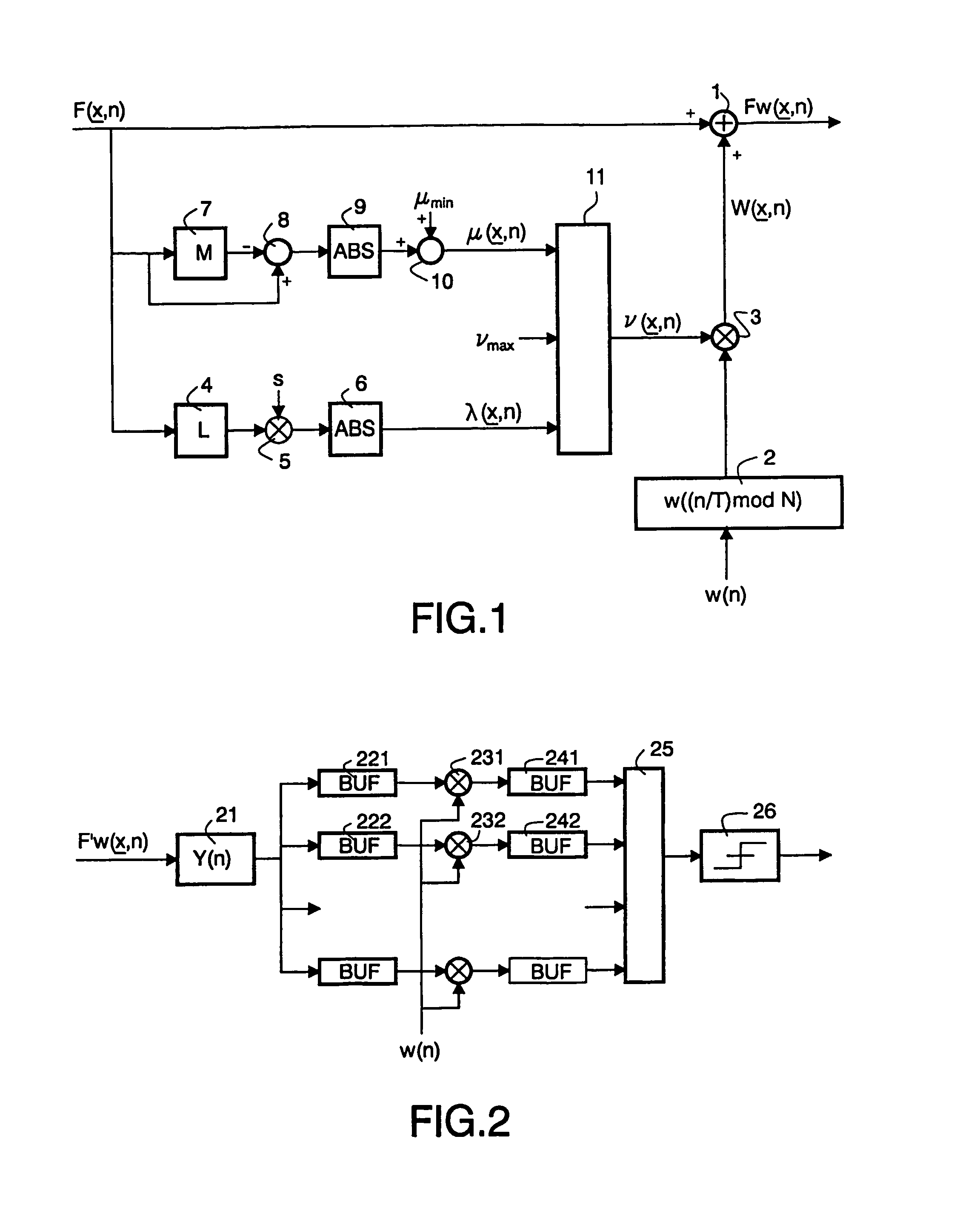Embedding and detection of watermark in a motion image signal
a motion image and watermark technology, applied in the field of embedding watermarks in motion image signals, can solve problems such as artifacts in watermarks
- Summary
- Abstract
- Description
- Claims
- Application Information
AI Technical Summary
Benefits of technology
Problems solved by technology
Method used
Image
Examples
Embodiment Construction
[0014]FIG. 1 shows a schematic diagram of a watermark embedder according to with the invention. The embedder receives a cinema movie in the form of a HDTV video signal having a luminance F(x,n) at spatial position x of frame n. The embedder further receives a watermark in the form of a pseudo-random sequence w(n) of length N, where w(n)ε[−1, 1]. An appropriate value of N for this application is N=1024.
[0015]In the simplest embodiment of the watermark embedder, the sequence w(n) is directly applied to an embedding stage 1 which embeds one watermark sample in every frame. In the preferred embodiment, this is performed by increasing the luminance of every pixel of frame n by 1 if the watermark sample w(n)=+1, and decreasing by 1 if w(n)=−1. The mean luminance of the sequence of frames is thus modulated by the watermark. The watermark repeats itself every N frames.
[0016]Other examples of frame parameters that can be modulated by the watermark are picture histograms (a list of relative f...
PUM
 Login to View More
Login to View More Abstract
Description
Claims
Application Information
 Login to View More
Login to View More - R&D
- Intellectual Property
- Life Sciences
- Materials
- Tech Scout
- Unparalleled Data Quality
- Higher Quality Content
- 60% Fewer Hallucinations
Browse by: Latest US Patents, China's latest patents, Technical Efficacy Thesaurus, Application Domain, Technology Topic, Popular Technical Reports.
© 2025 PatSnap. All rights reserved.Legal|Privacy policy|Modern Slavery Act Transparency Statement|Sitemap|About US| Contact US: help@patsnap.com



